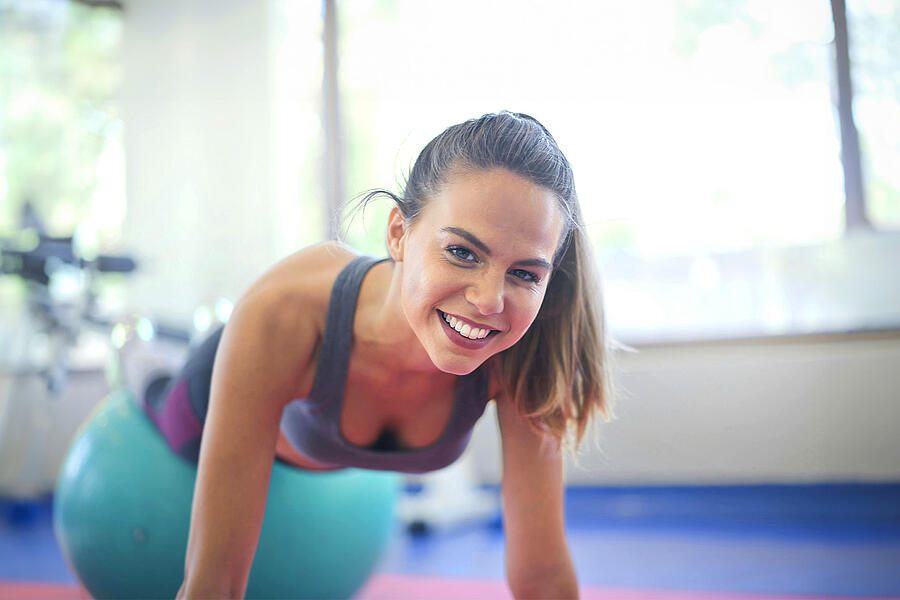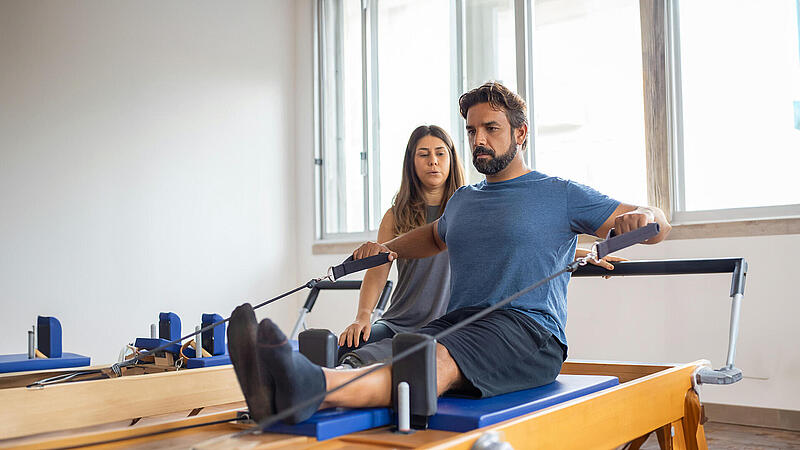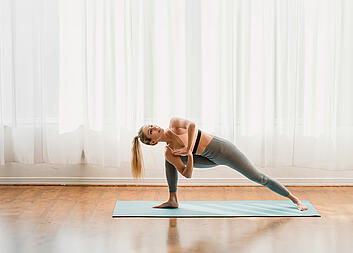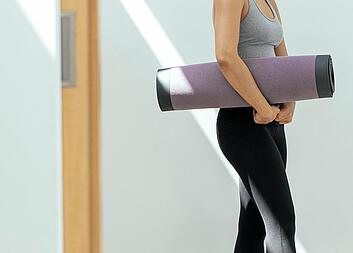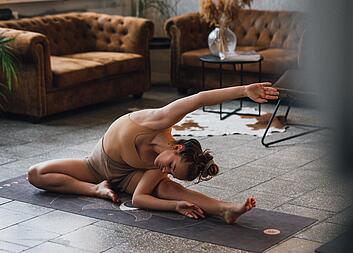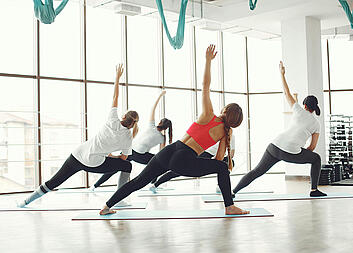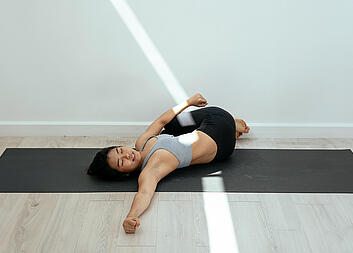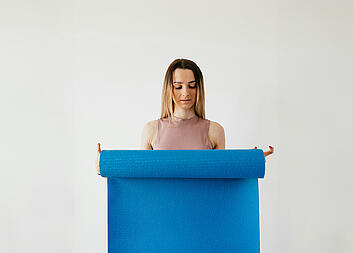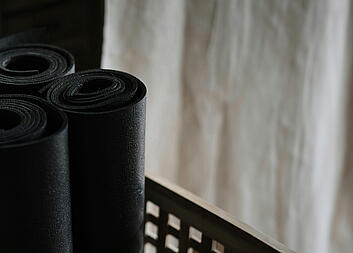Pilates can be performed both on the mat and with various small equipment. Mat exercises are ideal for beginners and provide an excellent way to learn the fundamental principles of Pilates. They focus on strengthening the core muscles and improving flexibility and balance.
Typical Mat Exercises:
- Hundred: A breathing exercise to activate the abdominal muscles.
- Roll-Up: An exercise to stretch the spine and strengthen the abs.
- Leg Circles: This exercise promotes hip mobility and strengthens the thigh muscles.
- Plank: A full-body exercise that strengthens the core muscles.
In addition to mat exercises, various small equipment can be used to intensify and vary the training. Typical small equipment includes:
- Balls: Support balance and coordination.
- Bands: Increase resistance and help to train the muscles more intensively.
- Foam Roller: Promotes muscle relaxation and stretching.
- Magic Circle: Provides additional resistance and intensifies the exercises.


